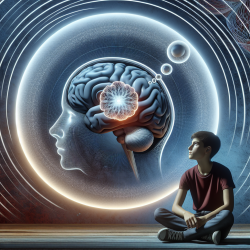Introduction
The complexities of adolescent depression are vast, and recent research has unveiled intriguing insights into the structural differences in the brains of adolescents with early-onset depression compared to their healthy peers. The study titled "Temporal-lobe morphology differs between healthy adolescents and those with early-onset of depression" explores these differences using advanced MRI techniques, providing a foundation for understanding the neuroanatomical underpinnings of depression in its nascent stages.
Key Findings
The research employed a multi-object statistical pose and shape model to analyze imaging data from adolescents with early-onset Major Depressive Disorder (MDD) and healthy controls. Significant differences were observed in the hippocampus, parahippocampal gyrus, putamen, and temporal gyri. Notably, pose differences were detected in the left and right putamina, right hippocampus, and left and right inferior temporal gyri, while shape differences were prominent in the left hippocampus and parahippocampal gyri.
Implications for Practitioners
For practitioners working with adolescents, these findings highlight the importance of considering brain morphology in the diagnosis and treatment of depression. The study suggests that morphological changes in the medial temporal lobe can be early indicators of MDD, which could influence therapeutic strategies. Practitioners are encouraged to integrate neuroimaging data into their assessment processes, potentially leading to more tailored and effective interventions.
Encouraging Further Research
While this study provides valuable insights, it also opens the door for further exploration. Researchers are urged to delve deeper into the relationship between brain morphology and depressive symptoms, especially in larger and more diverse samples. Longitudinal studies could offer a more comprehensive understanding of how these structural differences evolve over time and their impact on the progression of depression.
Conclusion
The study on temporal-lobe morphology offers a promising avenue for enhancing our understanding of adolescent depression. By focusing on structural brain differences, practitioners can improve their diagnostic accuracy and treatment efficacy. This research serves as a call to action for both clinicians and researchers to embrace the potential of neuroimaging in addressing mental health challenges.
To read the original research paper, please follow this link: Temporal-lobe morphology differs between healthy adolescents and those with early-onset of depression.










